A Seasonal Stroll Through History and Nature in Spring and Autumn
The Inui Street (乾通り) of Edo Castle is a historically significant path located on the northwest side of the Imperial Palace. Once connecting the Honmaru (main compound) with the Kitanomaru (northern compound), this passage is usually closed to the public. However, during special public openings in spring and autumn, visitors have the rare opportunity to explore this unique route.
During these limited-time events, many people flock to the area to admire the impressive stone walls and moats that symbolize Edo Castle’s strength and elegance. The route also offers a serene walk through the lush, natural woodlands of the Fukiage Garden (吹上御苑), a peaceful retreat within the bustling city.
In addition to its scenic beauty, the Inui Street holds deep historical significance. It is known as the former site of the Tōshōgū Shrine at Momijiyama (紅葉山東照宮) and the mausoleum of the Tokugawa shogunate family, making it a space where history and nature coexist in perfect harmony.
👉 For more detailed information, please visit the Imperial Household Agency’s official website.
Inui Street (乾通り)
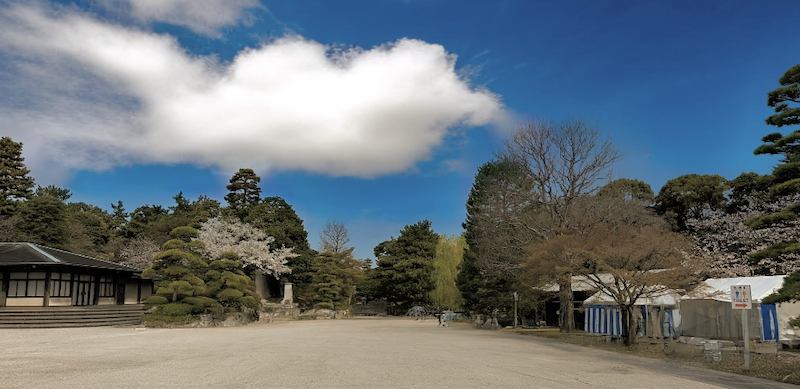
🏛 Overview
Inui Street (Inui-dōri) is a historic passageway located on the northwest side of the Imperial Palace. Once connecting the Honmaru (Main Compound) and the Kitanomaru (Northern Compound) of Edo Castle, the name “Inui” refers to the northwest direction—a direction traditionally considered auspicious in Japanese culture.
Though normally closed to the public, Inui Street opens its gates during special public viewings in spring (cherry blossom season) and autumn (fall foliage season), attracting many visitors. It stands as a symbol of both the defensive strength and aesthetic elegance of Edo Castle, particularly seen in the massive stone walls and moats on the Honmaru side. On the opposite side lies the Fukiage Garden, a pristine natural forest that offers a peaceful contrast to the imposing architecture.
A small hill known as Momijiyama (“Maple Leaf Hill”) rises on the Fukiage Garden side. In 1618 (Genna 4), the Momijiyama Tōshōgū Shrine was built here to enshrine Tokugawa Ieyasu. This shrine, along with Nikkō Tōshōgū and Kunōzan Tōshōgū, was one of the most significant of its kind and was also home to the mausoleums of successive shoguns. The Tokugawa shoguns would pay official visits here on April 17, the anniversary of Ieyasu’s death, as a show of reverence and authority. Although the shrine and mausoleums were dismantled after the Meiji Restoration, their historical importance continues to be remembered today.
As you walk along this unique route, you can feel the echoes of Edo period grandeur and natural beauty—truly a rare chance to experience “the path once walked by shoguns.”
🗺 Address:
1-1 Chiyoda, Chiyoda-ku, Tokyo
🚶 Access:
About 2 minutes (130 meters) on foot from Sakashita-mon Gate
⏳ Suggested Visit Time:
- For a brief visit: approx. 30 minutes
- For a deeper experience: approx. 1 hour (including nearby gates, moats, and gardens)
📍 Highlights:
🔹 Stone Walls and Moats of Edo Castle’s Honmaru:
To the right side (Honmaru), towering stone walls and serene moats showcase Edo Castle’s robust defenses and stately elegance.
🔹 Natural Forest of Fukiage Garden:
To the left, untouched woodlands stretch out, offering a rare pocket of tranquility in the heart of Tokyo.
🔹 Seasonal Charm:
During special openings, cherry blossoms in spring and brilliant foliage in autumn transform this path into a stunning seasonal experience.
📌 Trivia:
🔹 Unexpected Historical Role:
In Edo times, this area featured the Jōranjo viewing stand, where the shogun would observe martial arts and ceremonial performances, underscoring its prestige.
🔹 Hidden Gem:
The Fujimi-Tamon Yagura (watchtower), perched atop the stone walls, can be viewed up close from Inui Street—this is the only opportunity to do so during public openings.
🔹 Famous Connections:
The Inui route was part of Edo Castle’s strategic design when Tokugawa Ieyasu constructed it, serving as an important passageway for the shogunate.
Sakashita-mon Gate

🏛 Overview
Sakashita-mon Gate is located at the base of a slope leading to the Nishi-no-maru (Western Compound) of Edo Castle, from which it takes its name. During the Edo period, it was situated near the Ōoku (inner chambers of the shogun’s residence) and served as a service gate for the Nishi-no-maru.
One of the most historically notable events at this gate is the Sakashita-mon Incident of January 15, 1862 (Bunkyū 2), in which rōnin from Mito attacked Senior Councilor Andō Nobumasa. Today, the gate is used by the Imperial Household Agency and is not open to the public except on special occasions such as New Year’s visits or Inui Street public viewings.
🗺 Address:
1-1 Chiyoda, Chiyoda-ku, Tokyo
🚶 Access:
Closest Stations:
- Nijūbashimae Station (Tokyo Metro Chiyoda Line, Exit 6)
- Ōtemachi Station (Toei Mita Line, Exit D2)
Approx. 15 minutes on foot (around 650 meters)
⏳ Suggested Visit Time:
- Brief viewing: approx. 5 minutes
- In-depth sightseeing: approx. 10 minutes
📍 Highlights:
🔹 Hamaguri Moat (Hamaguri-bori):
Located to the right of Sakashita-mon, this moat features gracefully curving stone walls, combining defensive utility with aesthetic appeal.
🔹 Masugata Gate Structure:
The original layout included a Korai-mon (outer gate) and Yagura-mon (turret gate), showcasing the classic masugata (square compound) design typical of Edo-period castle architecture.
🔹 Seasonal Splendor:
The area is especially picturesque in spring when cherry blossoms bloom, and in autumn when the leaves turn vibrant hues.
📌 Trivia:
🔹 Unexpected History:
Originally built shortly after the construction of the Nishi-no-maru, Sakashita-mon featured a wooden bridge, which was later replaced with an earthen one.
🔹 Little-Known Facts:
The gate’s name derives from its location at the bottom of a slope (saka-shita) descending from the Western Compound.
🔹 Famous Figures:
In the 1862 Sakashita-mon Incident, Senior Councilor Andō Nobumasa was wounded by rōnin from Mito, an event that significantly influenced the political climate of the Bakumatsu period.
Fujimi Yagura
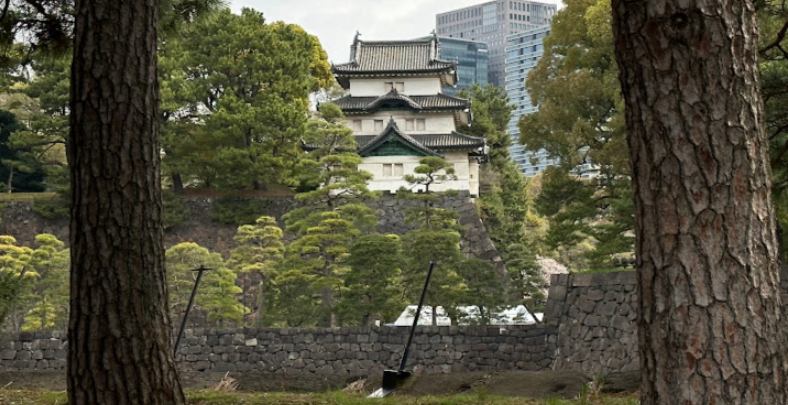
Hasuike Moat (蓮池濠)
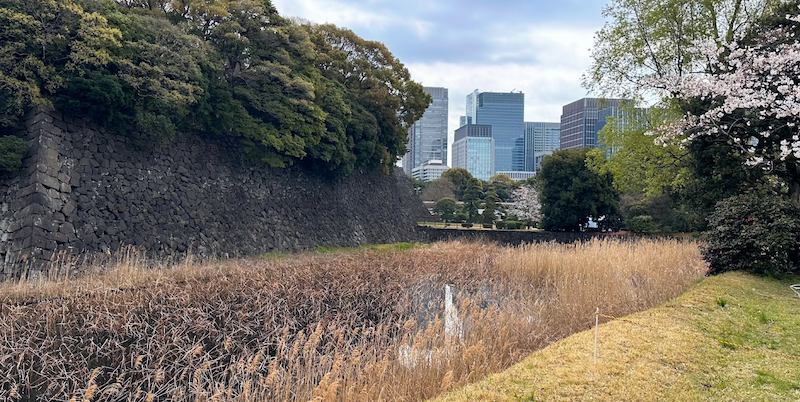
🏛 Overview
Located on the western side of the Honmaru (main compound), Hasuike Moat (literally “Lotus Pond Moat”) is one of the inner moats of Edo Castle. As its name suggests, the area was once famed for the lotus flowers that flourished here, adding not only beauty but also spiritual symbolism.
Serving both as a defensive barrier and a scenic feature, the moat played a crucial role in the overall structure and aesthetic of Edo Castle. Today, its still waters and surrounding greenery create a peaceful atmosphere that evokes the depth of history and the elegance of nature. In spring, cherry blossoms frame the water’s edge, while autumn brings vibrant foliage, offering picturesque views throughout the year.
Standing beside the moat is the historic Fujimi-Tamon Yagura, a multi-tiered turret that exemplifies Edo-period architectural precision and design sensibility. The harmony between manmade structure and natural surroundings makes this spot a must-see for history buffs and casual visitors alike.
🗺 Address:
1-1 Chiyoda, Chiyoda-ku, Tokyo
🚶 Access:
About 4 minutes (230 meters) on foot from Sakashita-mon Gate
⏳ Suggested Visit Time:
- For a brief visit: approx. 5 minutes
- For a thorough exploration: approx. 10 minutes
📍 Highlights:
🔹 Fujimi-Tamon Yagura:
Situated by the edge of Hasuike Moat, this turret was built as part of Edo Castle’s surveillance and defense system. The striking contrast between its white plaster walls and black-tiled roof reflects the architectural elegance of the period.
🔹 Harmony of Stone Walls and Water:
The expertly crafted stone walls mirror beautifully in the water, especially during sunrise and sunset, making it a favorite spot for photographers.
🔹 Seasonal Beauty:
In spring, cherry blossoms bloom along the moat, while autumn paints the scene with brilliant reds and golds. These seasonal spectacles draw both tourists and locals to soak in the natural beauty.
📌 Trivia:
🔹 Notable Figures:
The moat was part of the grand vision of Tokugawa Ieyasu, founder of the Tokugawa shogunate. He placed equal importance on military defense and visual aesthetics—Hasuike Moat is a prime example of this philosophy.
🔹 Unexpected History:
While no lotus flowers remain today, historical records confirm that in the early Edo period, the moat was filled with blooming lotuses, hence its name. The poetic symbolism of the lotus lives on through the name itself.
🔹 Hidden Stories:
This area was once the political and administrative heart of Edo Castle. Many significant events unfolded nearby, and walking the grounds offers a sense of stepping through layers of history.
Tsubone-mon Gate (局門)

🏛 Overview
Tsubone-mon Gate stands quietly on the western edge of Edo Castle’s Honmaru, holding deep symbolic meaning. Once used daily by the court ladies (okujōchu) who served in the Ōoku—the shogun’s private quarters—the gate is named after the role of “tsubone,” a rank among female attendants.
Though simple in structure, this gate was the official access point to a world far removed from the public eye. The Ōoku, behind the splendor of Edo Castle’s political stage, was a tightly regulated domain filled with intrigue, formality, and the private lives of those who supported the Tokugawa shogunate from behind the scenes.
Tsubone-mon Gate today remains closed to the public except during rare events like the New Year’s Greeting or seasonal openings of Inui Street. Modest yet stately, it remains a poignant symbol of the boundary between public power and the cloistered life of the women who once walked its path.
🗺 Address:
1-1 Chiyoda, Chiyoda-ku, Tokyo
🚶 Access:
About 6 minutes (350 meters) on foot from Sakashita-mon Gate
⏳ Suggested Visit Time:
- For a brief visit: approx. 5 minutes
- For a more immersive visit: approx. 10 minutes
📍 Highlights:
🔹 Architectural Aesthetics of Tsubone-mon:
Though modest in design, the gate’s thick wooden doors and imposing presence reflect the seriousness of its purpose. It served a unique role in the castle, specifically for women’s movement within its walls.
🔹 Entrance to the Ōoku:
While the inner quarters remain off-limits, standing before Tsubone-mon invites reflection on the rich and often dramatic history that once unfolded beyond it.
🔹 Seasonal Highlight:
During the spring Inui Street opening, visitors can view the gate up close, surrounded by blooming cherry trees—a rare and beautiful moment to witness.
📌 Trivia:
🔹 Unexpected History:
A famous anecdote tells of Lady Kasuga (Kasuga no Tsubone), the powerful wet nurse of Tokugawa Iemitsu, who once broke curfew and was denied entry at this gate—spending the night outside. The story goes that this incident only increased her influence in the shogunate.
🔹 Hidden Significance:
Tsubone-mon was the only gate at Edo Castle designated exclusively for women. It was managed under a different security protocol, underscoring its special status.
🔹 Famous Connections:
Lady Kasuga’s legacy is closely tied to Tsubone-mon. The gate’s very name is believed to have been established during her era, symbolizing her authority and the institutionalization of the Ōoku.
Mon-Nagaya (門長屋)
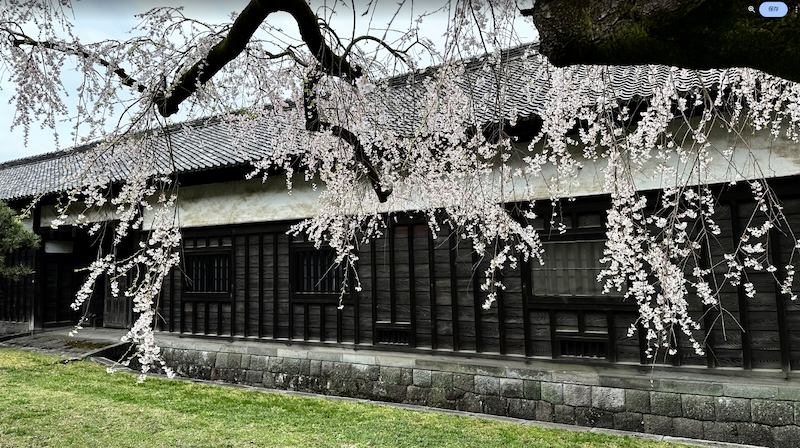
🏛 Overview
Mon-Nagaya—also known as Nagaya-mon—is a traditional architectural style unique to the residences of samurai families in the Edo period. Characterized by a central gate flanked by extended residential wings (nagaya), this structure served not just as an entrance but also as a symbol of status and authority.
More than a mere gateway, Mon-Nagaya housed gatekeepers, lower-ranking samurai, and household staff, blending function with form. Under Tokugawa Ieyasu’s reign, as the structure of samurai residences and urban planning became codified, the Mon-Nagaya emerged as a hallmark of the warrior class, embodying both practical utility and the stately pride of its occupants.
Architecturally, they often featured kirizuma (gabled) or irimoya (hip-and-gable) roofs, with white plaster walls or wooden siding to harmonize with the main residence. Today, surviving Mon-Nagaya structures serve as invaluable cultural assets that provide insight into the lifestyle and social hierarchy of Edo-period Japan.
🗺 Address:
1-1 Chiyoda, Chiyoda-ku, Tokyo
🚶 Access:
Approx. 7 minutes (420 meters) on foot from Sakashita-mon Gate
⏳ Suggested Visit Time:
- Quick stop: about 5 minutes
- Full appreciation: about 10 minutes
📍 Highlights:
🔹 Elegant and Functional Design:
The central gate and the adjoining wings form a visually commanding yet practical structure, designed to reflect the household’s rank.
🔹 Living and Guarding Combined:
The Mon-Nagaya functioned as both a residential space and a point of surveillance, with gatekeepers and staff maintaining 24-hour security—a snapshot of Edo-period social structure.
🔹 Seasonal Beauty:
Surrounded by gardens and cherry blossoms in spring, and vibrant autumn leaves in fall, the wooden structure makes for a stunning seasonal photo spot.
📌 Trivia:
🔹 Surprising Historical Reach:
Though rooted in the samurai class, Mon-Nagaya designs were also adopted by wealthy farmers and merchants, illustrating the cultural influence of the Tokugawa government.
🔹 Hidden Local Gems:
Traces of Mon-Nagaya can still be found around Edo Castle. Notably, the Hyakunin-Bansho (Guardhouse of the 100 men) in the East Gardens closely resembles a Mon-Nagaya in structure and function.
🔹 Famous Connections:
Under the Buke Shohatto (Laws for the Military Houses) enacted by Tokugawa Ieyasu, samurai were required to build gates according to their rank. Any excessive or inappropriate structures could be ordered demolished—strictly preserving the social order.
Dōkan Moat (道灌濠)
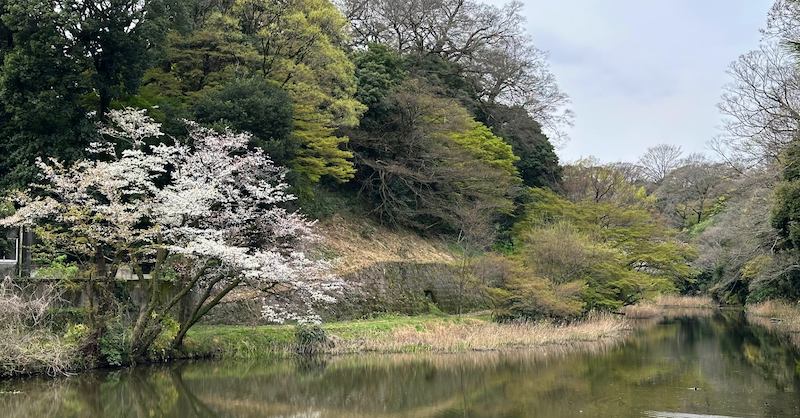
📸 The photo above captures Momijiyama—once the site of the Tōshōgū Shrine—as seen from Inui Street.
🏛 Overview
Dōkan Moat is one of the inner moats of Edo Castle and takes its name from Ōta Dōkan, the military commander credited with constructing the original Edo Castle in the late Muromachi period.
Functioning both as a strategic defensive element and a scenic feature, the moat played a vital role in shaping the castle’s harmonious blend of strength and beauty. Today, Dōkan Moat is nestled within the East Gardens of the Imperial Palace and is accessible during seasonal public openings.
Surrounded by nature that changes with the seasons—cherry blossoms in spring and rich foliage in autumn—the moat continues to enchant visitors with its quiet dignity. The peaceful ambiance, combined with a palpable sense of history, makes it a beloved spot for reflection and exploration.
🗺 Address:
1-1 Chiyoda, Chiyoda-ku, Tokyo
🚶 Access:
Approx. 9 minutes (480 meters) on foot from Sakashita-mon Gate
⏳ Suggested Visit Time:
- Quick visit: about 5 minutes
- Leisurely stroll: about 10 minutes
📍 Highlights:
🔹 Stonework in Harmony with Water:
The stone walls around Dōkan Moat are prime examples of Edo-period masonry. Their reflections on the water surface, especially during golden hour, provide stunning, ever-changing visuals.
🔹 Seasonal Splendor:
Spring brings waves of cherry blossoms, while fall transforms the area into a canvas of reds and yellows. These seasonal vistas attract both tourists and locals alike.
🔹 A Blend of Calm and Legacy:
The area maintains a peaceful atmosphere—perfect for walking and absorbing the layered history of the former Edo Castle grounds.
📌 Trivia:
🔹 A Name with Deep Roots:
The moat is named after Ōta Dōkan, the famed general who laid the foundation for what would later become the seat of the Tokugawa shogunate. In fact, there are multiple moats bearing his name—commonly distinguished as Upper and Lower Dōkan Moats.
🔹 Rarely Seen Gem:
Normally located in restricted areas, Dōkan Moat is accessible only during special openings of the Imperial Palace grounds—a rare opportunity to step into living history.
🔹 Historic Influence:
Ōta Dōkan’s early fortress would eventually be expanded by Tokugawa Ieyasu, forming the foundation of Edo Castle and, by extension, the Edo period’s political epicenter.
Fujimi-Tamon Yagura (富士見多聞)
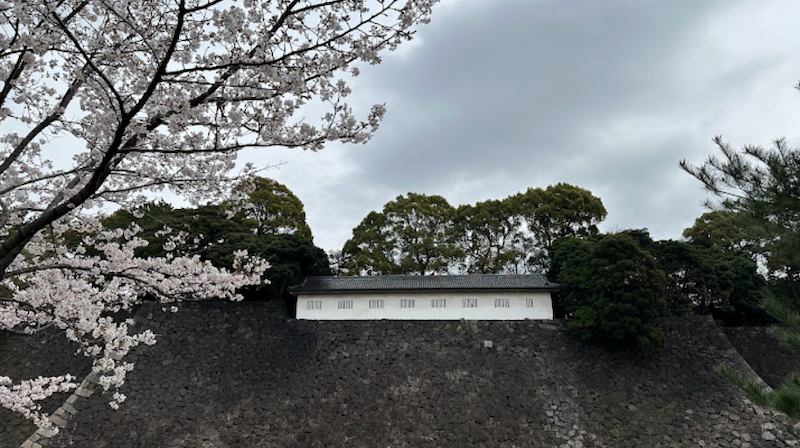
Nishihanebashi Bridge (西桔橋)

🏛 Overview
Nishihanebashi Bridge once served as a vital connection between the Honmaru (main compound) and the Nishi-no-maru (western compound) of Edo Castle. True to its name, it originally functioned as a hanebashi, or drawbridge, designed to be raised during times of conflict to block passage and protect the inner castle.
Spanning an earthen causeway between Hasuike Moat and Mikazuki Moat, the bridge has since been converted into a fixed structure. Today, the area surrounding Nishihanebashi still vividly retains the atmosphere of the Edo period, featuring historical stone walls and a view of the Fujimi-Tamon Yagura, a prominent watchtower that once served as part of the castle’s defense system.
In spring, the bridge area becomes adorned with cherry blossoms, while in autumn, vibrant leaves create a striking contrast with the stonework—offering visitors a scenic and seasonally rich experience. Currently, Nishihanebashi serves as a vehicle gate for members of the Imperial Family and is not open to the general public.
🗺 Address:
1-1 Chiyoda, Chiyoda-ku, Tokyo
🚶 Access:
Approx. 10 minutes (530 meters) on foot from Sakashita-mon Gate
⏳ Suggested Visit Time:
- For a quick view: about 5 minutes
- For a deeper experience: about 10 minutes
📍 Highlights:
🔹 Fujimi-Tamon Yagura:
Visible from Nishihanebashi, this historic watchtower was an essential part of Edo Castle’s surveillance and defense. Its traditional white plaster walls and black tiled roof are key examples of Edo-period fortification design.
🔹 Historic Stone Walls:
The area around the bridge preserves intricate stonework that showcases the engineering prowess of Edo-era castle construction. The craftsmanship and attention to detail remain awe-inspiring today.
🔹 Seasonal Attractions:
In spring, the surroundings bloom with cherry blossoms, while autumn transforms the area with brilliant fall colors—making it a favorite destination for photographers and history enthusiasts alike.
📌 Trivia:
🔹 Unexpected Historical Function:
Like its counterpart, the Kita-hanebashi-mon (North Drawbridge Gate), Nishihanebashi was originally built to lift up during emergencies, acting as a barrier to protect the castle’s inner sanctum.
🔹 Lesser-Known Fact:
Today, the bridge is used exclusively for vehicles transporting members of the Imperial Family. As such, public access is restricted, making any close view during special events a rare opportunity.
🔹 Connection to Tokugawa Ieyasu:
As with other key features of Edo Castle, Nishihanebashi was developed under the direction of Tokugawa Ieyasu. His vision extended beyond mere fortification; he emphasized aesthetic harmony as well—something this bridge exemplifies.
Inui Moat (乾濠)
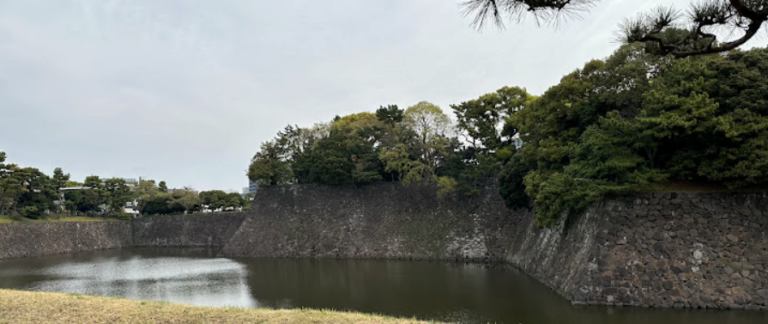
🏛 Overview
Located in the northwestern section of Edo Castle, Inui Moat (Inui-bori) is one of the inner moats constructed to enhance the fortress’s defense. It served as a crucial boundary separating the Honmaru (main compound) from the Nishi-no-maru (western compound), playing a key role in preventing enemy intrusion.
Today, Inui Moat lies within the East Gardens of the Imperial Palace and can be visited during special public openings. The area is surrounded by seasonal beauty—cherry blossoms in spring and colorful foliage in autumn—making it a favorite among nature lovers and history enthusiasts alike.
Blending rich historical context with tranquil scenery, this site remains a cherished legacy from the Edo period, offering insight into both the strategic and aesthetic priorities of castle design.
🗺 Address:
1-1 Chiyoda, Chiyoda-ku, Tokyo
🚶 Access:
Approx. 12 minutes (650 meters) on foot from Sakashita-mon Gate
⏳ Suggested Visit Time:
- Brief stop: about 5 minutes
- In-depth exploration: about 10 minutes
📍 Highlights:
🔹 Harmonious Stonework and Water:
The stone walls of Inui Moat showcase traditional Edo-period masonry, beautifully mirrored on the water’s surface—a captivating view at any time of day.
🔹 Seasonal Natural Beauty:
Cherry blossoms in spring and vibrant foliage in autumn enhance the serene atmosphere, attracting both tourists and locals year after year.
🔹 Peaceful Historical Ambience:
With its quiet surroundings, Inui Moat is an ideal place for a leisurely stroll where one can reflect on centuries of history.
📌 Trivia:
🔹 Unexpected Historical Insight:
Inui Moat was one of the inner moats designed to bolster Edo Castle’s defenses and to divide its central zones for strategic control.
🔹 Lesser-Known Fact:
Although normally located in restricted zones, Inui Moat becomes accessible during special Imperial Palace public viewings.
🔹 Connection to Tokugawa Ieyasu:
As part of the castle built by Tokugawa Ieyasu, Inui Moat reflects his emphasis not just on military security, but also on visual harmony and landscape design.
Inui Gate (乾門)
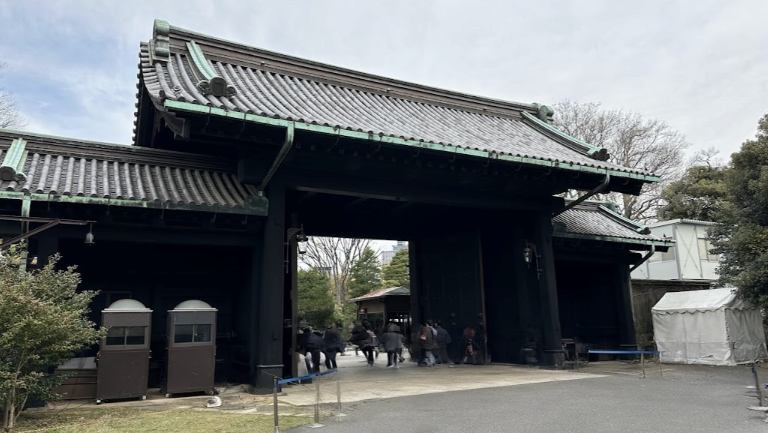
🏛 Overview
Situated on the northwest edge of the Imperial Palace, Inui Gate (Inui-mon) was established in 1888 (Meiji 21) by relocating the former Kōyōzan-shita Gate from the Nishi-no-maru’s rear. During the Edo period, this area was home to the Jōranjo, a viewing stand where the shogun would observe ceremonies and martial arts demonstrations.
Today, Inui Gate serves as a service gate for the Imperial Palace. During the seasonal public openings of Inui Street in spring and autumn, it functions as an exit point, guiding large numbers of visitors out of the palace grounds.
🗺 Address:
1-1 Chiyoda, Chiyoda-ku, Tokyo
🚶 Access:
Approx. 14 minutes (780 meters) on foot from Sakashita-mon Gate
⏳ Suggested Visit Time:
- Quick viewing: about 5 minutes
- Full appreciation: about 10 minutes
📍 Highlights:
🔹 Historic Gate Architecture:
Relocated and rebuilt in the Meiji era, the Inui Gate features a solid, dignified structure that reflects the craftsmanship of the time and preserves the spirit of its Edo-period origins.
🔹 Seasonal Scenery:
During the spring cherry blossom and autumn foliage seasons, the gate is surrounded by colorful natural scenery as part of the Inui Street public opening.
🔹 Serene Historical Setting:
Away from the crowds, Inui Gate offers a peaceful setting perfect for soaking in the quiet dignity of a once-regal route.
📌 Trivia:
🔹 Unexpected Historical Role:
The gate sits on the site of the former Jōranjo, where the shogun would attend ceremonial performances and martial exhibitions—a prestigious function in its time.
🔹 Little-Known Detail:
Inui Gate was formed by relocating the old rear gate of the Nishi-no-maru—Kōyōzan-shita-mon—in 1888, preserving part of Edo Castle’s legacy into the Meiji era.
🔹 Connection to Famous Figures:
As part of Edo Castle’s original structure, the area around Inui Gate is closely tied to the Tokugawa shoguns and reflects their use of the castle not only for governance but also for ceremonial prestige.
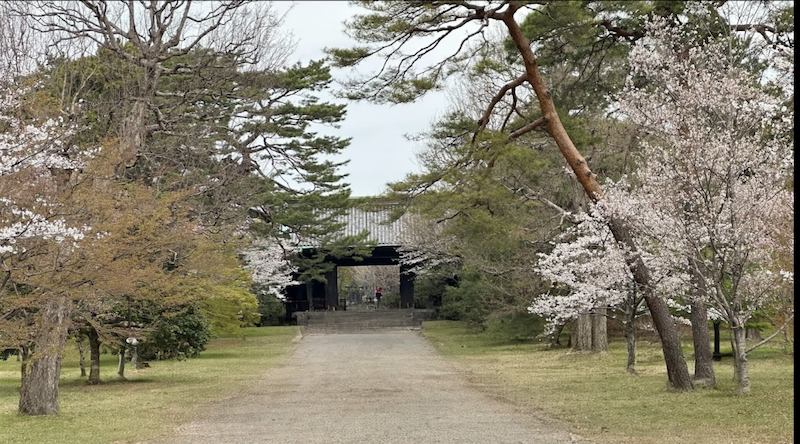
comment